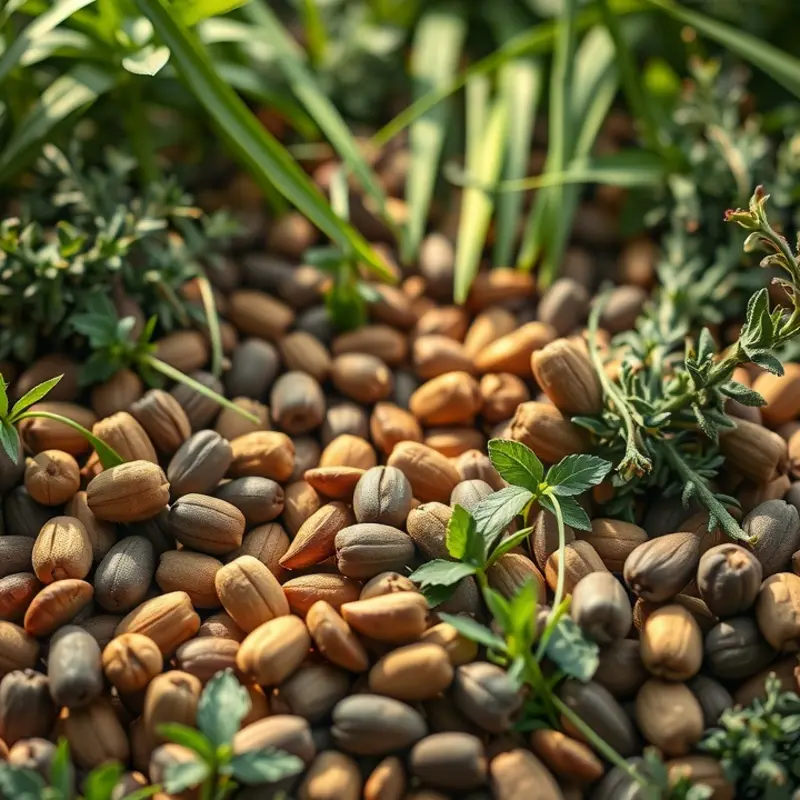Egg-free mayonnaise substitutes have become increasingly popular among home cooks and those pursuing healthier lifestyles. Whether you’re vegan, allergic to eggs, or simply seeking delicious alternatives, various options can still give you the creamy texture and flavor you crave in your dishes. This guide helps you navigate the most effective substitutes, ensuring you can enjoy your favorite recipes without missing out.
Creamy Bean-Based Alternatives

Venturing into the realm of bean-based alternatives offers a palette of possibilities for those seeking egg-free options. Beans are versatile, nutritious, and can be transformed into a creamy base that rivals traditional mayonnaise. They provide a rich, smooth texture coupled with an adaptable flavor profile, making them ideal candidates for revamping your culinary repertoire.
Consider silken tofu, a soft variety of tofu that is perfect for creating creamy spreads and dressings. Its neutral flavor allows it to absorb and complement various seasonings effectively. To transform silken tofu into a mayo-like spread, blend it with a splash of lemon juice, a dash of mustard, and a sprinkle of salt. The result is a smooth, tangy concoction with the desired consistency of mayonnaise.
Chickpeas, known for their creamy texture, can be pureed into a luscious alternative. By blending cooked chickpeas with olive oil, garlic, and a splash of apple cider vinegar, you can create a delicious spread that’s not only creamy but also packed with protein. Such blends offer a wholesome twist while maintaining the richness associated with traditional mayonnaise. You might even think about adding a pinch of cumin for an earthy undertone or paprika for a hint of heat.
White beans are equally commendable for their mild taste and ability to absorb flavors. To utilize these beans, mash them with a fork or blend until smooth. Add nutritional yeast for a cheesy depth, and incorporate olive oil for a silky finish. Season with fresh herbs such as dill or parsley to elevate the flavor. These beans excel in offering a fiber-rich alternative that doesn’t skimp on creaminess.
When crafting your bean-based mayonnaise, it is vital to master the art of seasoning. Seasonings can make or break your diy mayo, and the right balance elevates the dish. Introduction of acidity, such as lemon or vinegar, is crucial for obtaining that quintessential tang. A touch of sweetness from a hint of maple syrup or honey (or alternatives for a fully plant-based version) can balance the flavors beautifully.
For those interested in reducing waste and maximizing use of kitchen staples, explore tips on low-waste cooking prep. It aligns perfectly with the ethos of creatively using what you have, including beans, in your culinary experiments.
Incorporating bean-based alternatives into your kitchen ventures not only helps cater to egg-free diets but also enriches your meal preparation with variety and nutrition. These alternatives provide a canvas for inventive flavor combinations and offer a win-win situation: taste without compromise and creativity without bounds.
Nutty and Seed-Based Spreads

For those seeking delectable alternatives to traditional mayonnaise, nut and seed-based spreads offer a world of flavor and texture. By starting with a base of cashews, almonds, or sunflower seeds, you can create creamy, versatile spreads that are both nutritious and delicious. These spreads provide a unique flavor profile, perfect for enhancing salads, sandwiches, or even as a standout dip.
Ingredient Selection:
The key to achieving the perfect spread is selecting the right base ingredient. Cashews are popular due to their natural creaminess, while almonds lend a mild flavor with a slightly grainier texture. Sunflower seeds, on the other hand, offer an earthy and nutty taste, complementing various dishes well.
Preparation Techniques:
To begin crafting your nut or seed-based spread, soak your chosen base ingredient in water. This not only softens the nuts or seeds but also helps to break down phytic acid, making nutrients more bioavailable. Generally, soaking overnight will suffice, but even a few hours can make a noticeable difference.
After soaking, drain and rinse the nuts or seeds. Blend them with a touch of olive oil, lemon juice, and water to achieve a smooth consistency. Experiment with the liquid ratio to suit your desired thickness. For an added flavor dimension, include spices like smoked paprika, garlic powder, or freshly chopped herbs such as dill or parsley.
Flavor Enhancements:
To elevate your spread, consider adding nutritional yeast for a cheesy note or a hint of tahini for richer depth. Nut and seed spreads benefit from the addition of a vinegary component; try using apple cider vinegar or white wine vinegar to balance the creamy base with some acidity.
Versatile Use Cases:
Once prepared, these spreads open up a variety of culinary possibilities. Use them as a mayo substitute in your favorite sandwich or wrap. Or pair them with vegetable sticks for a nutrient-packed snack. Their rich texture makes for an excellent salad dressing component; simply thin the spread with some vinegar and olive oil.
Additionally, if you’re looking for more ways to integrate plant-based eating into your meals, these spreads offer a delicious transition. For those curious about easy plant-based recipes, this link to our guide can provide inspiration and practical advice for incorporating these spreads into a plant-focused diet.
Storage & Lasting Freshness:
Store nutty and seed-based spreads in airtight containers in the fridge, where they typically last up to a week. For longer storage, consider freezing smaller portions in ice cube trays, ensuring you always have a quick, flavorful boost at hand.
By mastering these nut and seed-based alternatives, you unlock a myriad of possibilities for enhancing your dishes with bold flavors and creamy textures, all without the use of eggs. These spreads are proof that creativity can yield both delicious and nutritious outcomes in the kitchen.
Final words
Opting for egg-free mayo substitutes opens up a world of culinary possibilities. By experimenting with bean-based and nut-based alternatives, you can create delicious, creamy spreads that align with your dietary needs while adding unique flavors to your meals. With these substitutes, you’re not only making conscious choices for your health but also exploring new tastes that can enhance everyday recipes. Remember, the key to enjoying these alternatives lies in balancing flavors and textures, allowing your creativity to shine in every dish.







